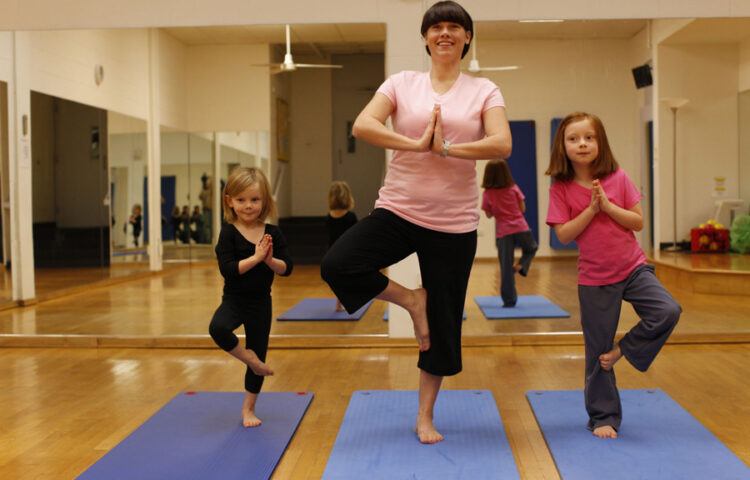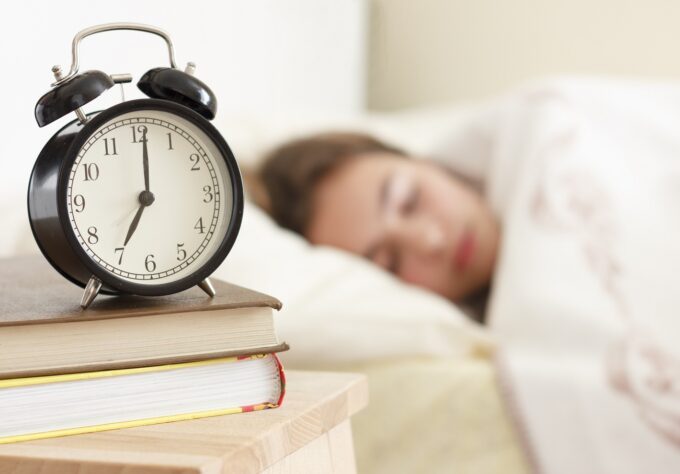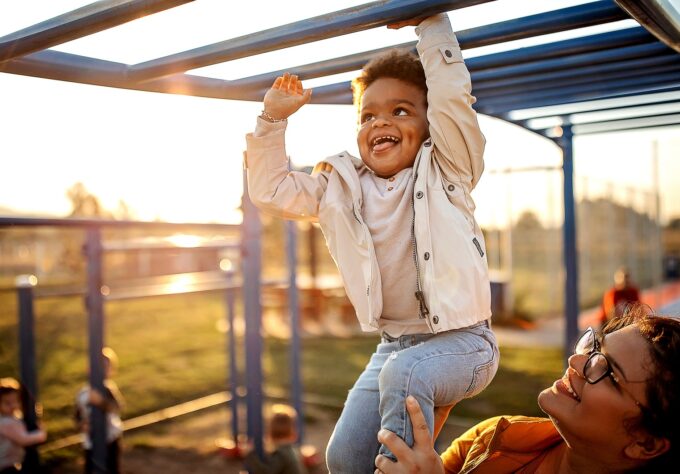If you start to take weekly bike rides with your second-grader or go on daily walks with your teen, chances are, the drive to exercise just might start to kick in. A recent study by researchers at Northwestern University found that kids tend to copy their parents’ unhealthy habits. Now this doesn’t mean you aren’t entitled to your chill time too, such as sitting and reading a book or playing cheap PC games once in a while. Everyone is entitled to spend some time each day chilling out and doing what they enjoy. However, showing your children that a small amount of exercise each day is important will benefit them in the long run. So your example might have more of an effect than you think.
Although some issues such as obesity, high blood pressure and high cholesterol can be genetic, they are also affected by lifestyle. The study found that children are significantly more likely to be at risk for these health problems and cardiovascular disease if their caregiver has these risk factors as well. It likely boils down to the fundamental fact that active parents tend to raise active children.
From infancy through adolescence, you can help your child stay active when you:
- are active yourself – show your youngster the importance of regular exercise by making it a welcome part of your family’s daily routine
- limit screen time (TV, computer, video games and cell phones) – none for kids under 2 and no more than 1 to 2 hours of quality programming and content for tots 2 and up
- make it fun – instead of forcing certain activities, figure out what helps keep your kid moving and loving every minute of it
How to Encourage Healthy Habits at All Ages
Here are some ways you can encourage your kids to keep moving throughout those early years and into adolescence:
Infants
Babies need help nurturing their budding skills as they grow. You can help your infants by:
- allowing plenty of supervised “tummy time” while awake
- helping them learn how to roll over by gently guiding them back and forth
- encouraging them to reach – and later, crawl – by placing enticing toys slightly out of reach
- teaching action songs, like “Pat-A-Cake,” “This Little Piggy,” “The Itsy Bitsy Spider” and “Pop Goes the Weasel”
- holding their little hands gently as they learn to walk but resist the urge to jump in when beginner walkers take a tumble. Let them learn how to push up, using the palms of their hands, to stand on their own.
- not keeping your baby in things that restrict their movement – like strollers, bouncy seats, swings and car seats – too often
Toddlers
Toddlers need at least an hour a day of unstructured (free play) activities like:
- using push and pull toys
- playing with shape sorters and building blocks
- pretending to be like Mommy or Daddy (vacuuming, using tools, cooking, etc.)
- using their imaginations (taking care of dolls, zooming cars, etc.)
- drawing with crayons
But toddlers also need at least half an hour of adult-led physical activity:
- listening to music and dancing or jumping together
- exploring and playing in the backyard or playground together
- climbing stairs and using climbing equipment
- playing ball
- taking a toddler movement or tumbling class together
- playing games like “Follow the Leader” and “Ring Around the Rosy”
Preschoolers
Preschoolers need some independent play time (about an hour) to choose their own activities (like painting and drawing, doing a puzzle, playing dress-up, etc.). But they also require at least an hour of organized play and exercise to help them develop – and learn how to master – important motor skills through activities like:
- kicking, catching and throwing a ball at home rather than in organized sports, where they might not understand the rules and may lack the attention span, skills and coordination needed
- hopping or balancing on one foot
- pedaling a tricycle or bike
- tumbling, skipping or freeze dancing
- running through obstacle courses
- playing games like “Tag,” “Hide and Seek,” “Follow the Leader,” “Duck, Duck, Goose,” “London Bridge,” “I’m a Little Teapot” and “Simon Says”
School-Age Kids
School-age children need about an hour of physical activity per day, which can include activities like recess play and brisk walking, in addition to higher-intensity activities like running. Letting kids explore a variety of physical activities, games and sports can help them find one they like the best and that they can focus on into adolescence. You can help them transition from small-child play to organized sports by:
- combining skills such as jumping, throwing, kicking and catching
- helping them learn how to cooperate with classmates and teammates for team sports
- allowing for unstructured free time when kids can decide what activity they want to do aside from organized sports and activities
- recognizing your child’s skill set and temperament – maybe a shy child wouldn’t like the team element of basketball but would be better suited for karate, or an outgoing kid would be too restless for golf but would love soccer
Teens
Teenagers also need about an hour of physical activity per day, but are often pressed for time to exercise with the demands of school, extracurricular activities and responsibilities at home. You can encourage teens to stay active by:
- supporting their interests, whether it’s a school sport, a group fitness class or a dance class
- providing transportation to and from their activities – if it’s difficult for teens to get to an activity, they might stop going
- making sure they have the proper equipment and clothing for the activity. The right shoes or gear may help teens feel more socially comfortable participating in their activities.
The number of kids who are overweight has more than doubled over the past 30 years. From infancy through the teens, many children are missing out on good old-fashioned physical activity that can help them to build strong muscles and bones, maintain a healthy weight, possibly lower their blood pressure and blood cholesterol, and build their self-esteem.
To help kids be active throughout their childhood and beyond, the key is finding activities they actually enjoy and feel successful doing. And if your kids see you enjoying a physical activity, they’ll likely feel more empowered to do the same.
Learn More
Find out more about how to encourage healthy habits in your kids’ lives:
Motivating Kids to Be Active (Nemours’ KidsHealth.org)
Physical Activity Guidelines for Americans (President’s Council on Fitness, Sports & Nutrition)
Shaping Your Family’s Habits (National Institute of Health)
Tips for Health Children and Families (FamilyDoctor.org)



